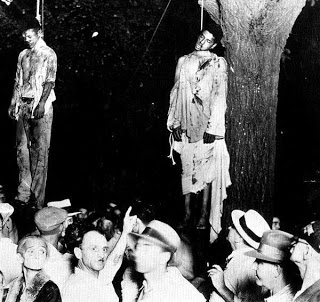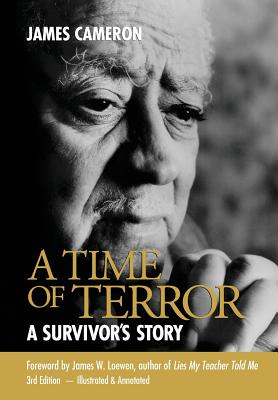It was a night in August 1930. A mob had lynched two friends of James Cameron and they were coming for him.
They got him, tied a noose around his neck, and called for his death.
“They had the rope around my neck, and they were going to rope me up between my buddies. And I prayed to God,” Cameron said in an interview in 2005. “I was saved by a miracle.”
Cameron and his two older teenage friends had been arrested and accused of murder, robbery and rape. His friends died but he survived, becoming what was believed to the nation’s last known survivor of a lynching.
He lived to tell the story of that night in Marion, Ind. and the story of lynching in his country.

Born on February 25, 1914, in La Crosse, Wisconsin, and from a poor background, Cameron was a shoeshine boy and had no criminal record until the night of 1930 when he joined his two older teenage friends in a car.
His friends, Thomas Shipp, 18, and Abe Smith, 19 began to plan a robbery, and he, then 16, followed them.
The two gave him a gun and asked him to rob a couple parked at Lovers Lane. Cameron, however, found out that the man in the car was Claude Deeter whose shoes he worked on. Thus, he gave the gun back to his friends and ran home but heard gunshots as he did. He would later find out that Deeter, 23, had been shot dead.
Cameron and his two friends were soon arrested. They were accused of murder, robbery and rape. This infuriated scores of people and soon a huge mob formed. The mob broke into the jail where Cameron and his friends had been kept and started dragging them out one by one.
Cameron later narrated that he could see from the window of his cell how his friends were beaten and lynched by about 2,000 people, which included members of the local Ku Klux Klan and neighbors whose shoes he had shined.
The mob then dragged Cameron out, beat him, kicked him, and put a noose around his neck.
At that moment, 16-year-old Cameron was prepared to die but he was saved – miraculously.
“…A voice came down from heaven and said, ‘Take this boy back. He had nothing to do with any killing or raping,’” Cameron later recounted.
That voice was believed to have been from an unidentified woman. With her intervention, the mob removed the noose and took Cameron back to the jail.
Later, Deeter’s girlfriend admitted that she had not been raped and after a year in jail, Cameron was convicted of being an accessory before the crime. He served four years in jail while no one was convicted for the lynchings.
Released at the age of 21, Cameron moved to Detroit where he worked as a truck driver for a laundry firm before getting married to Virginia Hamilton in 1938. The two had five children – two would die before Cameron.
Cameron and his family later moved back to Indiana, where he began dedicating his life to promoting civil rights, racial equality and unity, having studied lynchings and civil rights in America due to his personal experience, records say.
In the 1940s, he founded three chapters of the National Association for the Advancement of Colored People (NAACP), becoming the first president of the NAACP Madison County chapter in Anderson, Indiana. He also served as the state’s director of civil liberties, and for eight years, he investigated incidents of civil rights infractions.
But this came with violence and threats against his family so he decided to set off with his wife and children to Canada but stopped off in Milwaukee, having found so many job opportunities in the city.
He worked at a brewery in Milwaukee, a packaging job, among others while engaging in protests to end housing segregation, including the march with Martin Luther King, Jr. in the 1960s.
Between 1955 to 1989, the self-taught historian published scores of articles about civil rights and racial injustices, including “The Lingering Problem of Reconstruction in American Life: Black Suffrage”; and “The Second Civil Rights Bill”.
But what he is mostly remembered for is his well-written memoir, A Time of Terror: A Survivor’s Story which details his lynching experience.

Cameron is also behind America’s Black Holocaust Museum, described by LA Times as “a memorial to African Americans whose lives were lost to lynching, slavery and other injustices.”
He created the museum after his 1979 visit to Yad Vashem, the museum in Israel that honors the millions killed in the Holocaust.
Cameron’s museum, founded in 1988, contained a permanent exhibit on slavery and a series of photographs of lynchings, including the infamous photo of his friends – Shipp and Smith – hanging from a tree.
Cameron gained so much fame in the 1990s, having been at talk shows including “Oprah” and “Larry King Live” and his story was featured in several newspaper articles.
He lived to witness the U.S. Senate issuing an apology for its failure to outlaw lynching but what is perhaps his most cherished recognition before his death in 2006 was his official pardon from the Indiana Governor and Indiana Parole Board.
“It’s quite an emotional thing,” Cameron said in 1993 after being told he had received a pardon.
There is more in this video:










